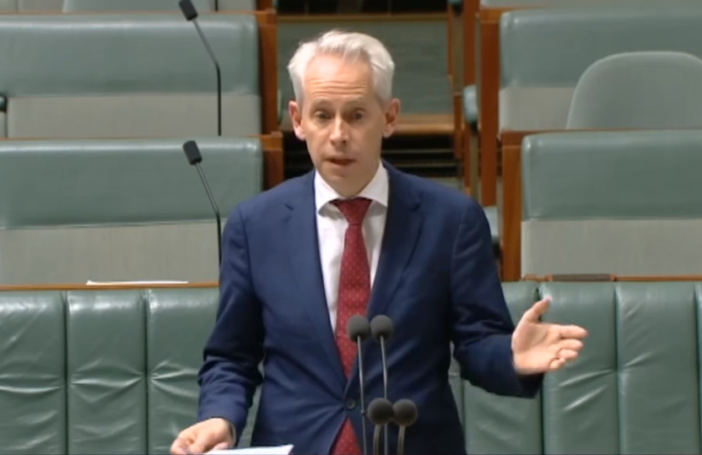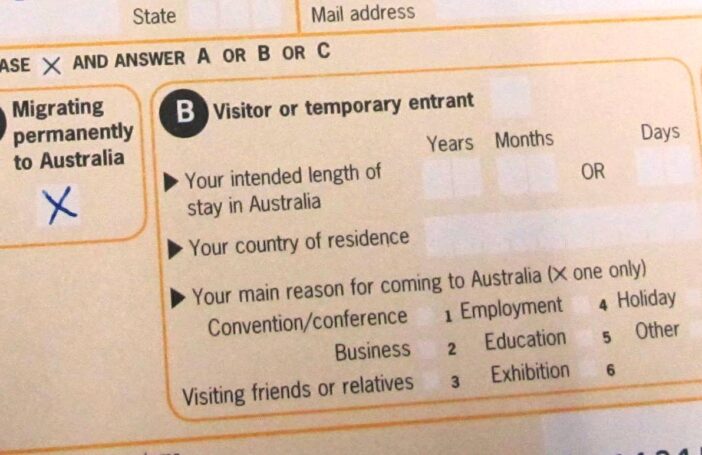Yesterday in Australia’s Parliament the Opposition decided to oppose the supporting legislation to implement the Pacific Engagement Visa (PEV), an election commitment of the new government to provide permanent residency to 3,000 Pacific islanders per year through a lottery.
Shadow Minister for Immigration Dan Tehan gave a lengthy speech prosecuting the Opposition’s case. His main argument was that instead of running the PEV through a lottery the new visas should be given to temporary Pacific workers already in Australia under what is now called the PALM (Pacific Australia Labour Mobility) scheme.
It is not surprising that the Opposition has converged on this view since the then Coalition Minister for Pacific Development Zed Seselja more than hinted at it in the run up to last year’s election. Nevertheless, linking the two visas would be unwise. Making permanent migration the prize for PALM participation would only increase the skills mismatch that PALM is already experiencing and that is worrying Pacific governments. It would lead to a waste of skilled labour by encouraging teachers and tradespersons to pick fruit or work in an abattoir for four years in order to get permanent residency in Australia. It would also skew selection in favour of countries that have been successful in PALM rather than the ones that are underrepresented in Australia. Only 15% of PALM workers are from the two most populous sending countries that would have the largest PEV quotas: PNG and Timor Leste.
To be clear, there is a strong case, which I have made, for introducing PALM pathways to permanency, but the numbers would be small, the process lengthy, and this should in no way be seen as an alternative to the PEV.
While Tehan’s central idea was that PALM and PEV should be linked, he also articulated the “many reasons” the Coalition had for not supporting the new legislation. Despite saying at various points that he supported the concept of the PEV and that the scheme has merit, taken as a whole the speech can only be read as one of outright rejection.
First, the Shadow Minister ridiculed the idea that visas for permanent residency would be given out by lottery, not mentioning once that the US and New Zealand have both successfully used this method for decades.
Second, he said that the PEV would lead to brain drain by attracting skilled workers from Pacific nations. However, a lottery gives equal chances to skilled and unskilled workers. Other systems, such as points-based ones, would be to the advantage of skilled workers, so opposing a lottery on the grounds of brain drain makes no sense at all.
Third, he argued that the introduction of the PEV would reduce remittances because the migration would be permanent rather than temporary. In fact, the evidence supports the view that long-term Pacific migrants continue to remit, and in fact they may remit more because they can earn more over time. In any case, this is an argument against any move to permanent migration, and so against the PEV in any form, whether or not linked to PALM.
Fourth, Tehan expressed concern that a worker might come to Australia under the PEV and quit or lose their job within weeks, ending up on welfare. However, migrants come to Australia to work for a better life, and the likelihood of workers quitting their job would actually be higher if PEV and PALM were linked. As soon as they got their PEV, many PALM workers would quit their farm and abattoir jobs and move to the city.
Fifth, the Shadow Immigration Minister said that the PEV was opposed by some Pacific nations, in particular Samoa. In fact, the PEV has had an overwhelmingly positive response from the Pacific. While the Samoan government has expressed some reservations, the New Zealand lottery scheme that operates in that country is incredibly popular. Every year, some 40,000 applicants (20% of the Samoan population) apply for 1,100 visas. There would be a similarly high level of excess demand for any similar visas from Australia. In any case, Australia can easily address Samoan government concerns by reducing the number of visas it offers to Samoa (country allocations are yet to be announced). After all, Samoa is already well-represented in Australia because of the large number of Samoans who migrate to New Zealand, become New Zealanders and then migrate to Australia. Fewer visas for Samoa would mean more for the under-represented Pacific countries in Australia such as Papua New Guinea, Solomon Islands and Vanuatu.
It is also worth noting that Samoa has not allowed its PALM workers to extend their visas for a fourth year, as offered by Australia, and, because it wants them to return, would strongly oppose the linking of PALM and PEV.
Finally, Tehan ended with the furphy that the PEV would be the first break with Australia’s post-White-Australia Policy of a non-discriminatory immigration system. This is nonsense. Temporary schemes such as the backpacker visa (and PALM itself) are highly discriminatory. And, on the permanent front, Australia has allowed unlimited and open-ended access to New Zealand citizens since 1973. Moreover, if the Opposition is really convinced of this argument, it should oppose both PALM and PEV. (At one point, Tehan’s view did indeed seem to verge on one of scepticism about the value of any migration from the Pacific at all.)
It is not clear why Dan Tehan decided not only to object but to object so comprehensively (if incoherently) to the PEV. A Liberal-chaired parliamentary committee last year recommended in favour of it. The arguments supporting this new visa are as simple as they are compelling. It is in Australia’s national interest to increase the Pacific diaspora in Australia. This is the best way for Australia to increase its Pacific influence, but it is something that PALM, as a temporary migration scheme, does not do at all. And the best way to grow the Pacific diaspora – not only the fairest, but the one that minimises risks of brain drain – is by a migration lottery, a technique successfully used by both the United States and New Zealand.
This is the second time the Coalition has opposed changes to Australia’s migration system that favour the Pacific. In the mid-2000s, John Howard’s government refused to bow to pressure from employers and the Pacific nations to introduce a Pacific seasonal work scheme (instead introducing second-year farm-work backpacker visas that benefited other rich countries but excluded the Pacific). It was left to Labor to introduce the Seasonal Worker Programme (SWP) in 2007 – which the Coalition subsequently supported and indeed expanded into what is now the PALM scheme. Alexander Downer, then Foreign Minister, has since conceded that the Howard’s government’s opposition to the SWP was a mistake.
Whether the legislation for the PEV can now get through will depend on the Greens and crossbenchers in the Senate. Precisely because it has had such a positive response in the region, it would be highly damaging to Australia’s reputation not to be able to proceed with the new visa, and have it in place by the target date of July 1.




